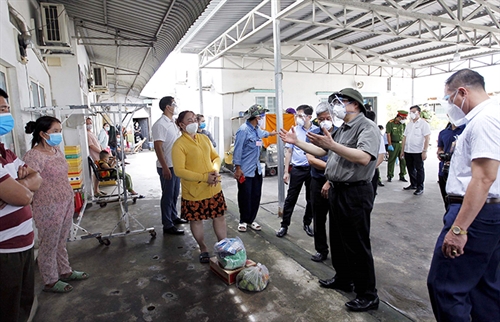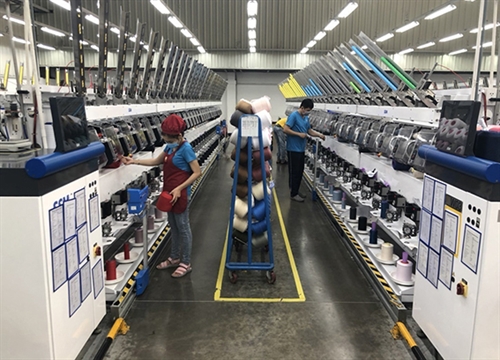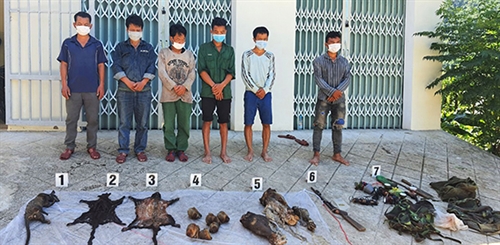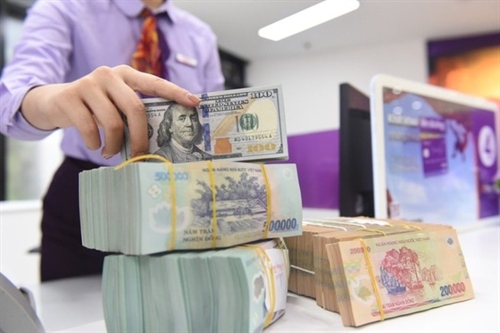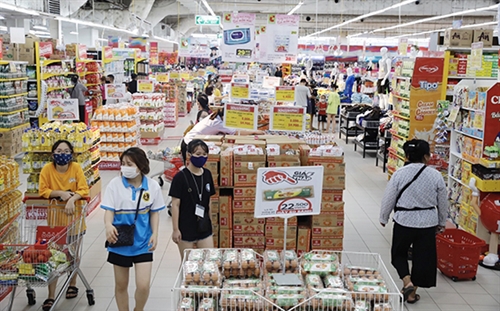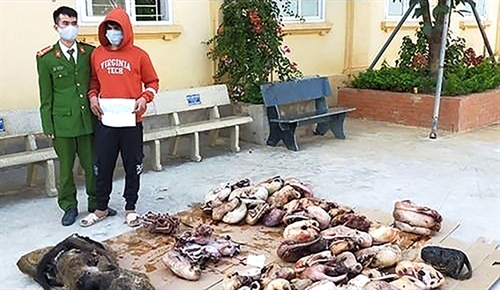In the first half of 2021, according to the General Statistics Office of Vietnam (GSO), with Gross Domestic Product (GDP) rising by 5.64 percent year-on-year, the country still managed to maintain its economic growth and stability. The fourth wave of the COVID-19 pandemic in late April drastically changed the situation. In September, the country decided to turn its policy from “zero COVID” to “safe and flexible adaptation to and effective control of the pandemic”.
Coming to the end of a year like no other, Jacques Morisset, World Bank (WB) Lead Economist and Program Leader for Vietnam, has granted the Vietnam News Agency an interview about the economic snapshot of the country in 2021, as well as the economic scenarios in 2022.
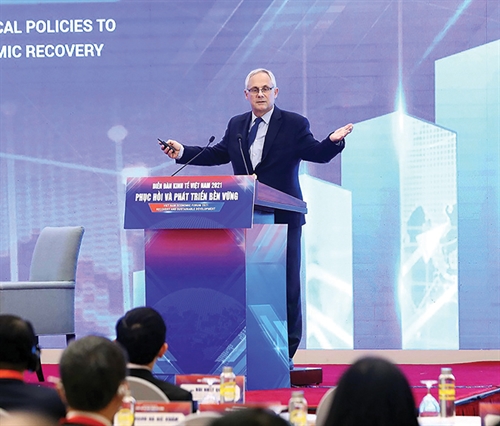 |
| World Bank Lead Economist and Program Leader for Vietnam Jacques Morisset__Photo: VNA |
Economic snapshot in 2021
According to the WB official, 2021 is a tough year for Vietnam with GDP expected to increase by 2 percent only.
To look further into this, he said that Vietnam’s economic year of 2021 could be divided into three periods.
The first period is from the beginning of the year to April when the country still has the momentum from 2020 when the pandemic was under control and manufacturing and service sectors were operating efficiently. During this period, the GDP growth rate reached 5-plus percent, which was fairly high compared to the rest of the world.
Then came the fourth wave of the pandemic in late April, which led to the interruption of most economic activities and a big decline in the country’s GDP.
Shops were closed, many industrial parks in the South were forced to suspend their operations and people were not moving due to several lockdowns. As a result, the country recorded a year-on-year GDP decline of 6.17 percent in the third quarter, the sharpest ever quarterly contraction. According to the GSO, about 60 percent of the population is heavily impacted by this fourth wave, losing jobs or major part of their income.
The economy has gradually recovered since the fourth quarter of 2021, which is the third period. However, according to Jacques Morisset, it is still an uneven recovery. In November, the country witnessed an increase in the industrial production and export sectors compared to the same period last year. However, the demand for retail products is still 12 percent lower than last year, showing a slow recovery in domestic sale.
Suggestions for speeding up economic recovery in 2022
When asked to make suggestions for Vietnam to boost the economic recovery and gain growth for the upcoming year, Jacques Morisset said the Vietnamese Government has made its greatest efforts ever to contain the pandemic. Specifically, the vaccination rate increased sharply over the last few months as the country is able to vaccinate over one million people per day, which is certainly a world record.
However, in the near future when new coronavirus variants emerge, the Government needs to keep the pandemic situation under control, which will be a foundation for accelerating economic recovery.
Another suggestion of the WB official is to ensure supply and demand balancing. It is undeniable that export and manufacturing production are booming again. However, due to the country’s economic decline in the third quarter, people have lost jobs and parts of their income or savings, it is unexpected that they will consume a lot of products.
Therefore, he advises that the Government take demand stimulus measures such as fiscal packages like it was done in many other countries.
As the country’s public debt level is only 44 percent, there remains a fiscal space for those supporting packages as the threshold set by the National Assembly is 60 percent, the economist said, adding that the cash reserve of Vietnam will be sufficient for increase of state budget expenditures for reactivating public investment programs commenced in 2020 and providing financial support for people and businesses affected by the pandemic by reducing taxes and budget revenue collection.
If the two aforementioned measures are implemented, Vietnam can put the engine back to gain a GDP growth rate of 6-6.5 percent in 2022 as set forth by the National Assembly.
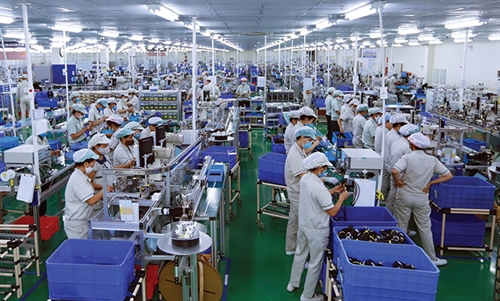 |
| Ha Nam-based Japan-invested NMS Vietnam Com. Ltd. resumes operation after prolonged lockdown due to COVID-19__Photo: Danh Lam/VNA |
Potential risks in 2022
The biggest potential risk to the country’s economy in 2022 is the complicated developments of the pandemic with the emergence of new coronavirus variants, according to Jacques Morisset.
Also, as an open economy, Vietnam will certainly be dependent on what’s happening in the rest of the world. As its export sector has contributed the most to growth for many years, the slow recovery of other countries like the US or European countries will affect Vietnam’s economic growth.
Another risk facing the country could be inflation. It can be seen that inflation occurred in the import sector due to the increase of petroleum prices and then, transport costs, while domestic prices are not increasing because the country is in the situation where supply exceeds demand. However, domestic inflation will happen if there is an increase in demand to some extent. In case of domestic inflation, the situation will still be manageable as long as the Government adopts more prudent monetary policies.
Like most countries in the world, Vietnam has used the monetary policies to help businesses suffering from the COVID-19 crisis and maintain the economic stability. It has encouraged banks to reduce interest rates to make credit affordable to businesses and people. However, the monetary policies are just an unbalanced support because they only target at bank-related business activities while at least half of domestic enterprises have no relationship with banks.
Monetary policies might also involve risks as money will be poured into the pocket of companies that will fall bankrupt or the companies will not be able to repay the loans to the banks. Hence, the risks are just transferred from businesses to banks.
For that reason, the WB official advises the Government to be more cautious of the monetary policy and to ensure greater transparency on what is the situation of banks and companies or borrowers in the banking system.
In addition, Jacques Morisset believed that monetary policies should be used in parallel with fiscal policies, which will be implemented through investment. Thanks to the disbursement of investment capital, jobs will be created, materials purchased and the economy stimulated, he said, adding that for the short term, the fiscal policy could be a useful instrument for Vietnam to stimulate the economy and bring the country back to the trajectory before the COVID-19 crisis.
However, according to the Ministry of Finance, although the Government expected to spend around 4 percent of the GDP to support enterprises and people, merely 2.8 percent of the GDP has been disbursed so far, of which 1.6 percent is for tax deferrals.
Motivations for economic growth
As risks usually come with opportunities, the COVID-19 pandemic has made Vietnam a good candidate for diversification of supply chains of multinational corporations.
As described by Jacques Morisset, Vietnam is an attractive economy with cheap and productive labor, attractive tax incentives, and many resources.
Moreover, Vietnam is exposed to climate change but can also take advantage of climate change to shift to a green economy. In 2020, the Government provided subsidies for solar energy, which is warmly welcomed by the business cycle. Specifically, the total investment in this sector in the first eight months of 2020 exceeded the total investment of the ASEAN countries or the whole African continent in the same period. With the vibrancy and ingenuity of Vietnamese entrepreneurs, Vietnam will be able to produce more green products, which could be one of the drivers of growth of the country in the coming years.
Another key driver for growth of Vietnam is the domestic demand. It is the fact that the country is becoming a richer economy with a growing middle class. The biggest change in the Vietnamese economy before the COVID-19 crisis was the appearance of the middle class and big local companies, which mostly serve domestic demands and the middle class. The rebalance from the foreign to the domestic demand and the growing of middle class will stimulate demand and supply in Vietnam and be the main factors of growth, the WB official believed.
Describing operations of the WB in Vietnam in the coming year, the official said that the WB will continue supporting Vietnam with the ambition that the country will become a high-income and prosperous economy by 2045.
Specific supports from the WB include promoting sustainable development of the Mekong River delta in adaptation to climate change and mitigation of pollution in big cities.
The WB plans to give more support to Vietnam in terms of development of hi-tech economy. Specifically, in the next two decades, Vietnam needs to create a business environment where every company could take advantage of technologies and technological skills.
In the near future, a support package of USD 220 million will be provided by the WB to help the country recover from the COVID-19 pandemic, focusing on mobile money services and gender-related issues to make sure that the people are still part of the economy and suffer less from the pandemic while being able to take advantage of future opportunities.-

